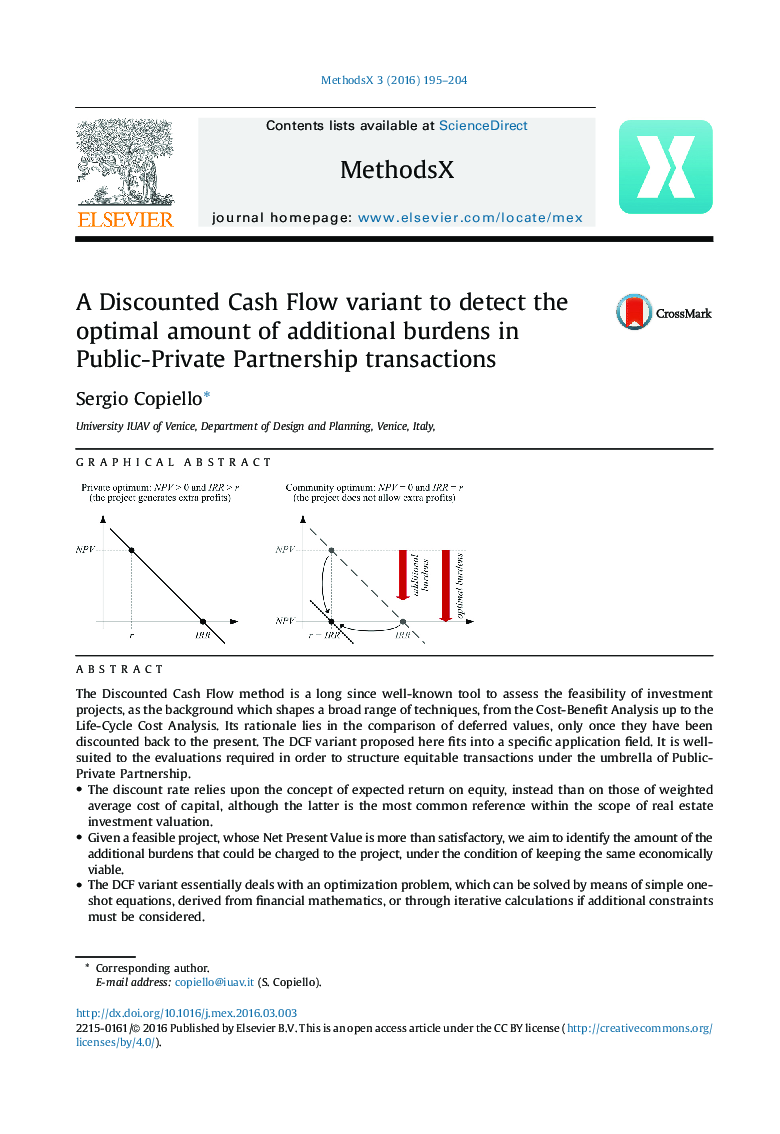| کد مقاله | کد نشریه | سال انتشار | مقاله انگلیسی | نسخه تمام متن |
|---|---|---|---|---|
| 2058675 | 1543967 | 2016 | 10 صفحه PDF | دانلود رایگان |
The Discounted Cash Flow method is a long since well-known tool to assess the feasibility of investment projects, as the background which shapes a broad range of techniques, from the Cost-Benefit Analysis up to the Life-Cycle Cost Analysis. Its rationale lies in the comparison of deferred values, only once they have been discounted back to the present. The DCF variant proposed here fits into a specific application field. It is well-suited to the evaluations required in order to structure equitable transactions under the umbrella of Public-Private Partnership.
• The discount rate relies upon the concept of expected return on equity, instead than on those of weighted average cost of capital, although the latter is the most common reference within the scope of real estate investment valuation.
• Given a feasible project, whose Net Present Value is more than satisfactory, we aim to identify the amount of the additional burdens that could be charged to the project, under the condition of keeping the same economically viable.
• The DCF variant essentially deals with an optimization problem, which can be solved by means of simple one-shot equations, derived from financial mathematics, or through iterative calculations if additional constraints must be considered.
Figure optionsDownload as PowerPoint slide
Journal: MethodsX - Volume 3, 2016, Pages 195–204
